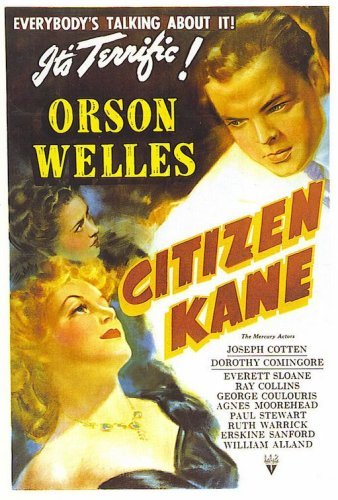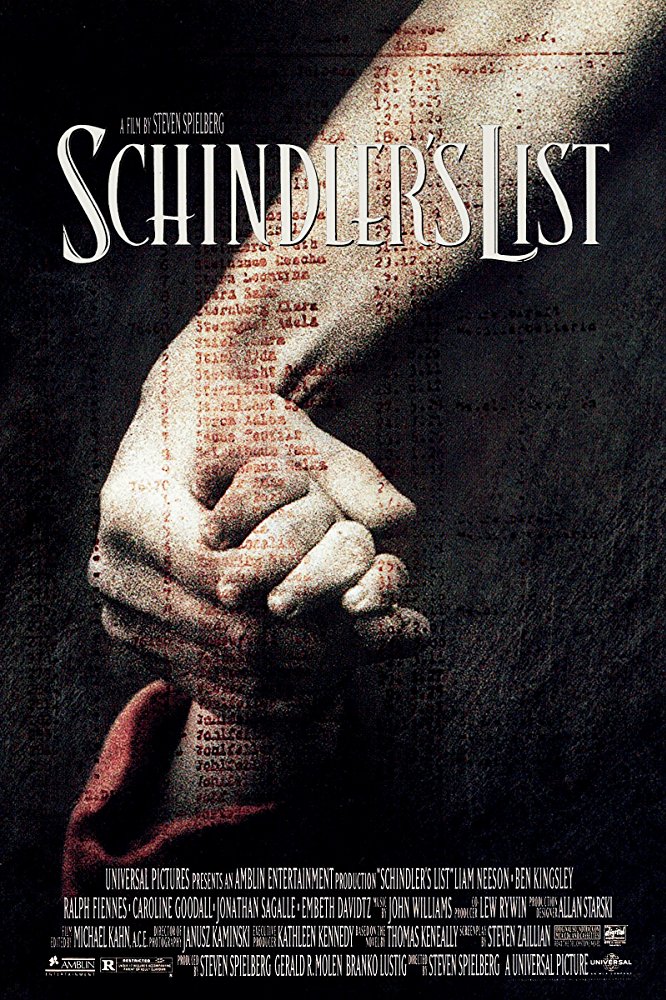
2 FILMS TO BE THANKFUL FOR
Article By Abbey Archer
Thanksgiving is just around the corner, which means stuffing our faces with nature’s bounty, snoozing in front of the television, and feeling a little more thankful for the people and things in our lives – including films. And while there are some that are based around the turkey holiday, the only 2 that I can think of that are actually good are A Charlie Brown Thanksgiving, and Planes, Trains & Automobiles. So instead of possibly offending anyone with not naming other movies that they consider noteworthy, here’s a different take: what are some films that you’re thankful for? While you’re thinking of your answers, I offer you 2 films that, for technical and/or ground-breaking reasons, should fill your heart with gladness. (Or not. I’m not your mom. You can make your own decisions.)

CITIZEN KANE (1941)
It may be a cliché to include the film that is widely, and arguably, considered The Greatest Film of All Time And Space And Century And And And Etc. Here’s the thing: it’s not. But it’s certainly up there. Written, directed, and starring the now legendary Orson Welles, Citizen Kane tells the story of newspaper tycoon, Charles Foster Kane, a man who came from nothing, built his career on yellow journalism, and died alone in a gigantic, unfinished mansion. Based in part on aspects of the formidable William Randolph Hearst, it shows Kane’s life in flashbacks, giving the audience a look at a larger-than-life personality that just couldn’t give his love to the right people.
This may sound like a tired trope now in 2017, but for people in 1941, this nonlinear way of storytelling was newer to the silver screen. Going back and watching this in the theatre a few weeks ago, I was amazed at some of the ways Welles did his directing. From cameras sweeping downward from a rain-soaked window to angling shots upward that feature Kane (giving the illusion of his condescending view of those beneath him), Welles gave his film a little more breath and life than those from back then. His Kane is a literal tower, overshadowing the efforts of those around him and thinking only of himself, which is masterfully shown in a shot toward the end of the film: he walks in front of an infinity mirror, stopping to observe his own reflection that goes on and on.
I’ll be the first to admit that about 50% of this film hasn’t aged well. It’s pretty obvious. But the 50% that does is some of the finest work ever put to celluloid. Citizen Kane and its technical proficiency changed the way we see films now. Almost everything can somehow be traced back to Kane’s roots, from storytelling to camerawork trickery to the metaphor that is used from Kane’s dying word: “Rosebud.” And the fact that a lot of people loathed this when it came out – even being openly booed at the Oscars that year– is just unbelievable. It took home the Oscar for Best Original Screenplay … but not Best Picture. It was critically successful … but didn’t recoup enough at the box office to make a profit.
As time has gone on, however, critics and audiences began to see it as a true gem, a shining star in a sky full of vapid films that excite for the duration of its runtime, and then are promptly forgotten. (*cough*Avatar*cough*) Citizen Kane, for the most part, has stood the test of time, still as important now as it was when it was released 76 years ago. If you haven’t already checked this out, do it, for posterity’s sake. And even if you don’t end up enjoying it, there’s no denying in how masterfully it is shot and executed in telling a resonating story.

SCHINDLER’S LIST (1993)
For the better part of his beginning years in the film industry, Steven Spielberg was mostly known for his classic, high-octane adventure films that were geared toward the family crowd. Jaws, E.T., Jurassic Park, and his Indiana Jones trilogy are as iconic as they are pure popcorn-munching fun, and though he’d dabbled briefly (and successfully) in drama with The Color Purple, and Empire of the Sun, his mark on audiences was still on the fairly light variety. And then came 1993, and with it his most ambitious effort up to that point: Schindler’s List.
In case you need a quick reminder and history lesson, here’s what you need to know: at the start of WWII in Europe, Oskar Schindler, a German Nazi, leases a factory in Poland to mass produce pots and pans for the army. He needs cheap workers, so he hires Jews living in the ghetto nearby. At first, his reasons are for his monetary gain; but by the end of the war, his personal witness of the horrors of the Holocaust propels him to save approximately 1,100 Jews from certain death.
There had been other Holocaust-based portrayals that had been done before the 1993 release, but Schindler’s List is one of those rare films that transcends the movie-going experience completely: you feel like you’re actually there, witnessing the senseless violence and humiliation that happened at that point in history. You see firsthand both sides of the humanity coin, weeping from the indescribable kindness and evil that humankind is capable of. And Spielberg rightly doesn’t pussy-foot around with the content; he wants you to feel every kind of heartbreak for those that were murdered so terribly, but also see that even in the darkest times, hope finds a way to break through.
I’m probably romanticizing this film, but I can’t help it: it has been my favorite film since I was 14. Believe me, though, it deserves every inch of its acclaim and importance, consistently voted as one of the Greatest. It may be hard to be thankful for a film so unimaginably depressing in tone, but without it, we wouldn’t know such heroism in the face of pure moral repugnancy. Watching this film will literally make you want to be better as a person – I guarantee it.




